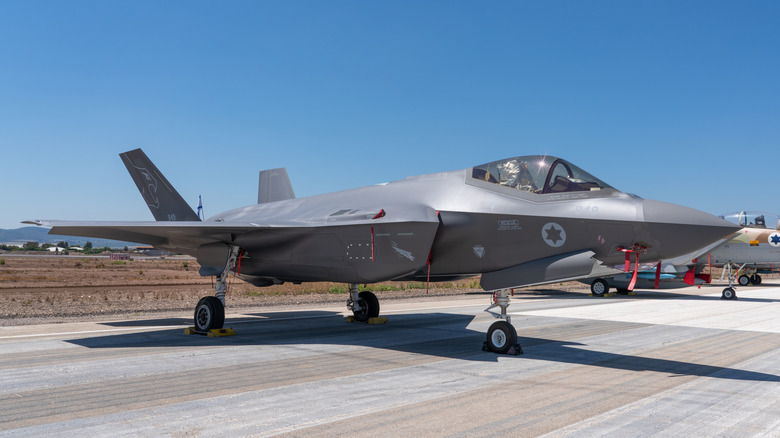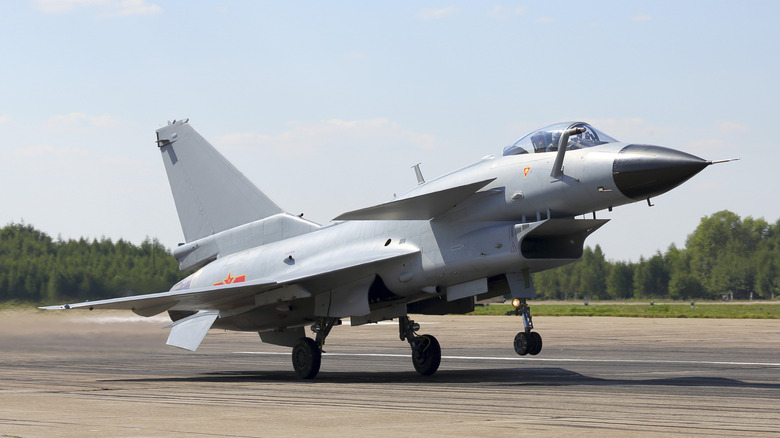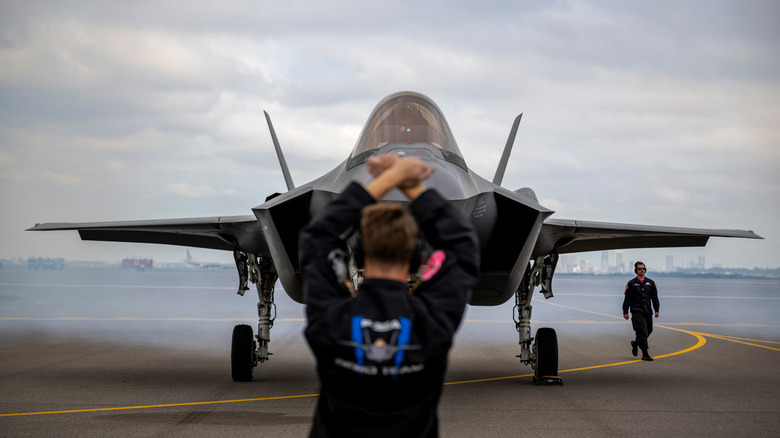Could This Chinese Fighter Jet Be Iran's Answer To The F-35?
The first half of 2025 is already behind us, and so is one of the most talked-about and discussed global conflicts of recent times. The Iran-Israeli conflict of 2025 will primarily be remembered for Israel's brazen attack on top-ranking military officials, military facilities, and nuclear sites, as well as the subsequent counter-attack by Iran using ballistic missiles against Israeli cities. The conflict ended after a hurriedly conjured 'ceasefire' brokered by Donald Trump, two days after the U.S. entered the war officially by using its B2 Stealth bombers to target Iran's most critical nuclear installations.
While Iran did manage to hit several sites in Israel with a barrage of ballistic missile strikes, its strike capabilities were limited to just that. Israel, on the other hand, claimed complete air superiority over Iran right from the beginning of the conflict. According to TIME, Israel was in complete control over the Iranian skies just four days into the conflict. Israel initially used its stealth-capable F-35 fighters to fly deep into Iranian airspace virtually undetected and destroy Iran's archaic air defense installations — including radar and air defense rocket batteries.
Once convinced that Iran could do little to stop the advance of Israeli aircraft into its territory, Israel sent its older fighter jets — including the likes of the F-15s and the F-16s deep into Iran, even flying above the country's capital, Tehran, with impunity. To assert its dominance over Iranian skies, Israel even bombed the headquarters of Iran's national TV station, even as the station was broadcasting live. Clearly flummoxed by the scale of the Israeli attack, Iran is reportedly seeking help from China to fix the gaps in its air defense systems while also achieving advanced air combat capability, with Beijing's J-10 fighter jet high on Tehran's wish list.
Desperate for options: Why Tehran wants the J-10C
There are two primary reasons why Iran is considering China's J-10c fighters. First, the Iran Air Force's current arsenal of fighter jets consists of aging machines that have not undergone upgrades or proper maintenance for decades. Secondly, the J-10C is, realistically, the only advanced fighter jet the country can acquire, given the current complex global geopolitical scenario. Iran's current fighter fleet still includes Cold War workhorses like the F-4 Phantom II, Su-24 Fencer, MiG-29, Chengdu J-7, and the F-14 Tomcat. Most of these jets are relics better suited for a museum than a modern battlefield. The American-made aircraft were all bought before the 1979 Islamic Revolution — back when Iran still had close ties with the U.S.
Thanks to its openly anti-U.S. stance, Iran has been under U.S.-led sanctions for several decades now. This limits Iran's capabilities to not only buy equipment and spare parts for its old jets but also affects its ability to acquire jets from most U.S. allies. So, the possibility of developing advanced jets from countries like France, the U.K., and most of the Western bloc is almost impossible. That leaves Iran with very few alternative suppliers with a proven history of manufacturing fighter planes: countries like Russia and China.
Since 2023, Iran had been in talks with Moscow to acquire Russia's advanced SU-35 fighter jets. However, with Russia facing challenges of its own with Ukraine, it is unlikely that they would be able to honor their commitments to Iran. That leaves Iran with China and its J-10C fighter, which has raised quite a storm in international aviation circles after its reported success against the Indian Air Force's 4.5-generation Dassault Rafale fighters.
J-10C vs F-35: Is it even a fair fight?
Even if Iran's purported J-10C deal with Beijing goes through, it is unlikely to tilt the balance of power in favor of Iran. This is because while the J-10C has a decent track record in terms of sheer technology and capabilities, the J-10C and the F-35 cannot be directly compared. To begin with, both aircraft serve different roles. The F-35 is a 5th-gen multi-role stealth fighter optimized for air superiority, strike, suppression, and destruction of enemy air defenses with network-centric warfare in mind. The J-10C, on the other hand, is a modernized version of a 4th-generation multi-role fighter jet with purported 4.5-generation capabilities. Unlike the F-35, it does not possess oodles of stealth capability, nor is it designed to penetrate heavily defended airspace like the F-35 can.
In simpler words, the J-10C can't compete head-to-head with an F-35 in stealth and other capabilities, but it doesn't have to since it is not designed for such operations. A more apt comparison would be China's under-development F-35 rival — the Shenyang J-35A. Another option and potential rival to the F-35 for Iran is the Chengdu J-20 stealth fighter, which is already operational. However, China does not offer this aircraft for sale, and it is exclusively designed for the Chinese Air Force.
Still, if Iran were to get its hands on a squadron of Chinese J-10Cs, it would instantly boost the country's patrol reach and deterrence power. The J-10C's modern capabilities, including its AESA radar, long-range PL-15 air-to-air missiles, and capability to handle modern beyond-visual-range (BVR) combat would give Iran far better detection and tracking than its existing array of outdated systems and aging fighter jets.


